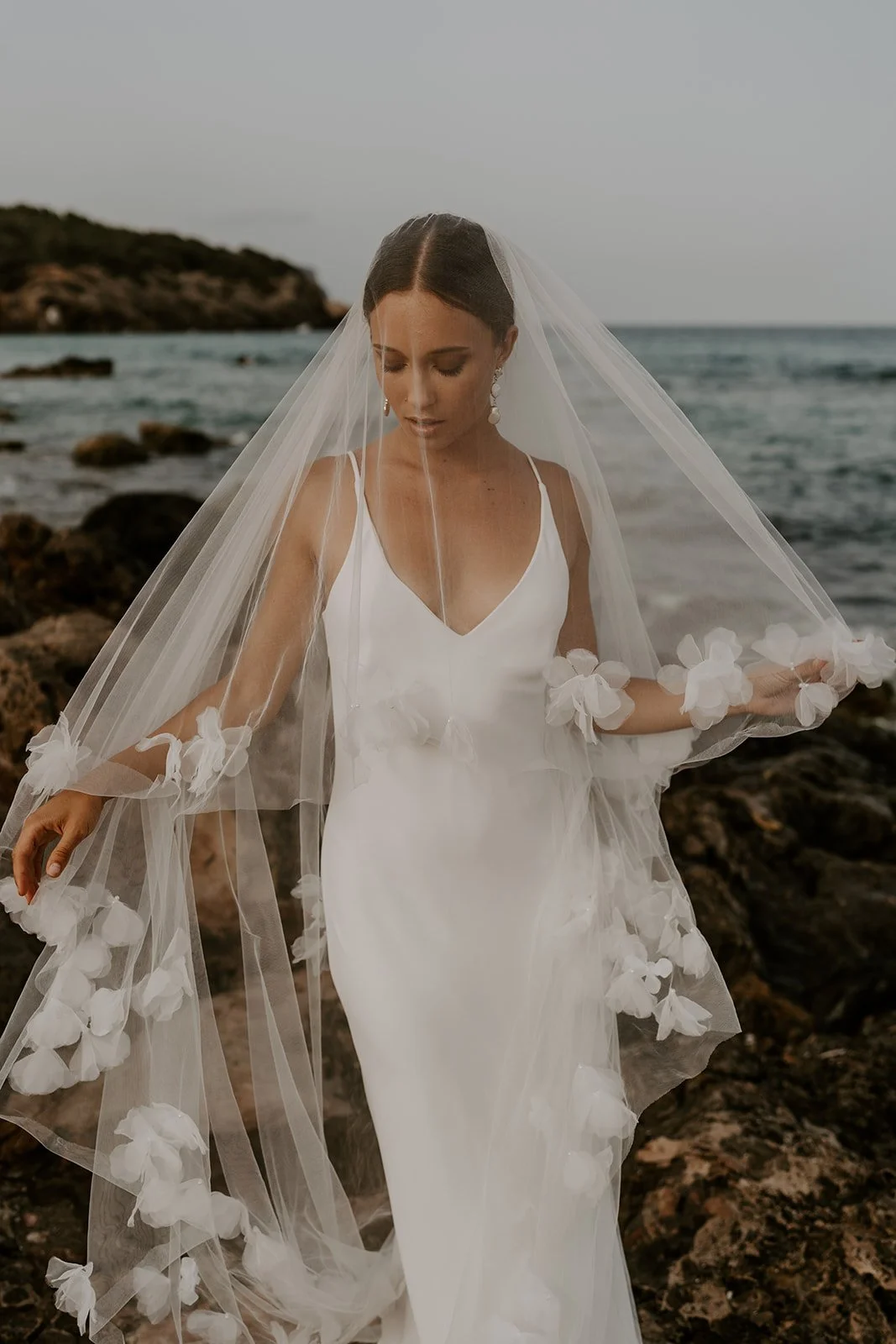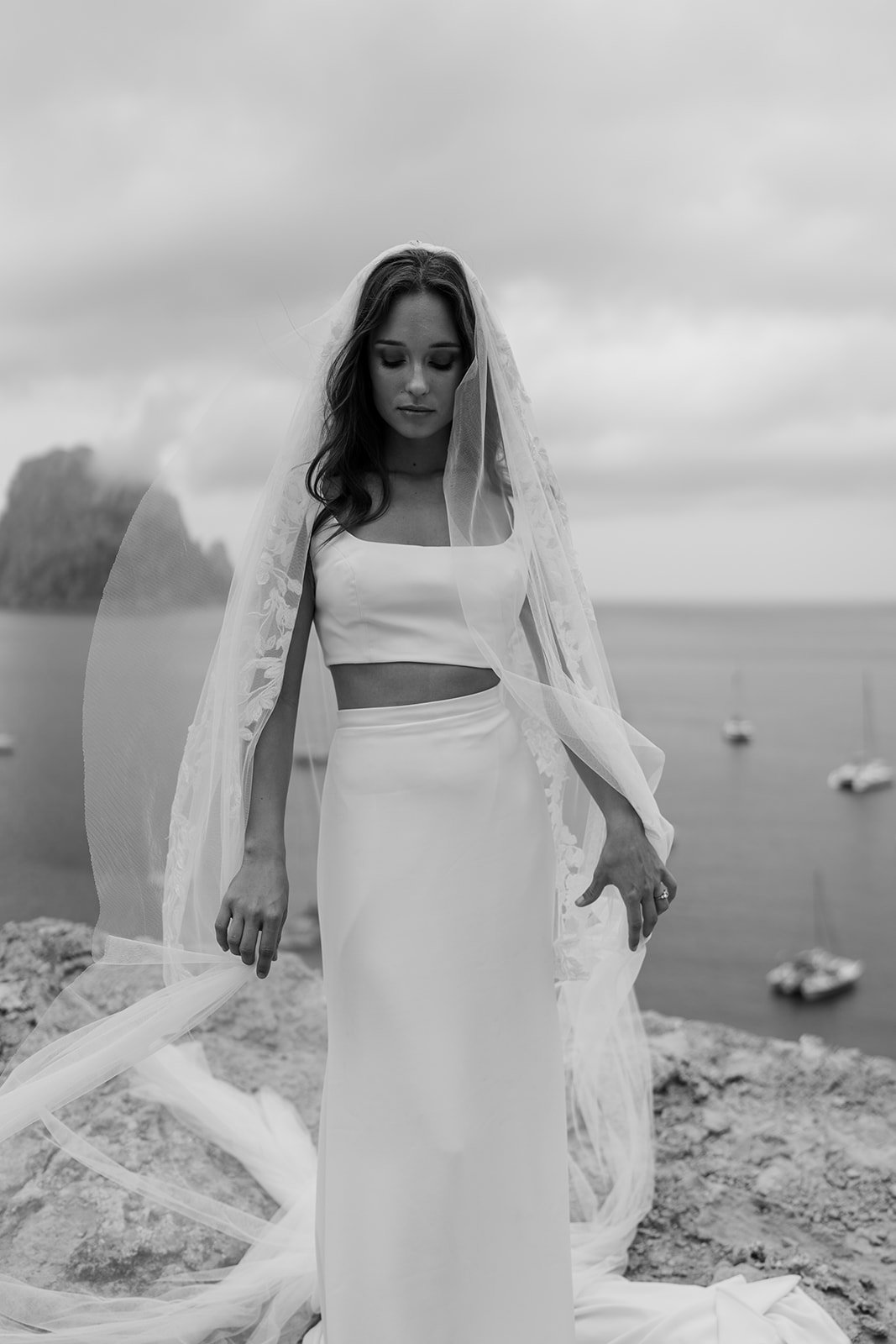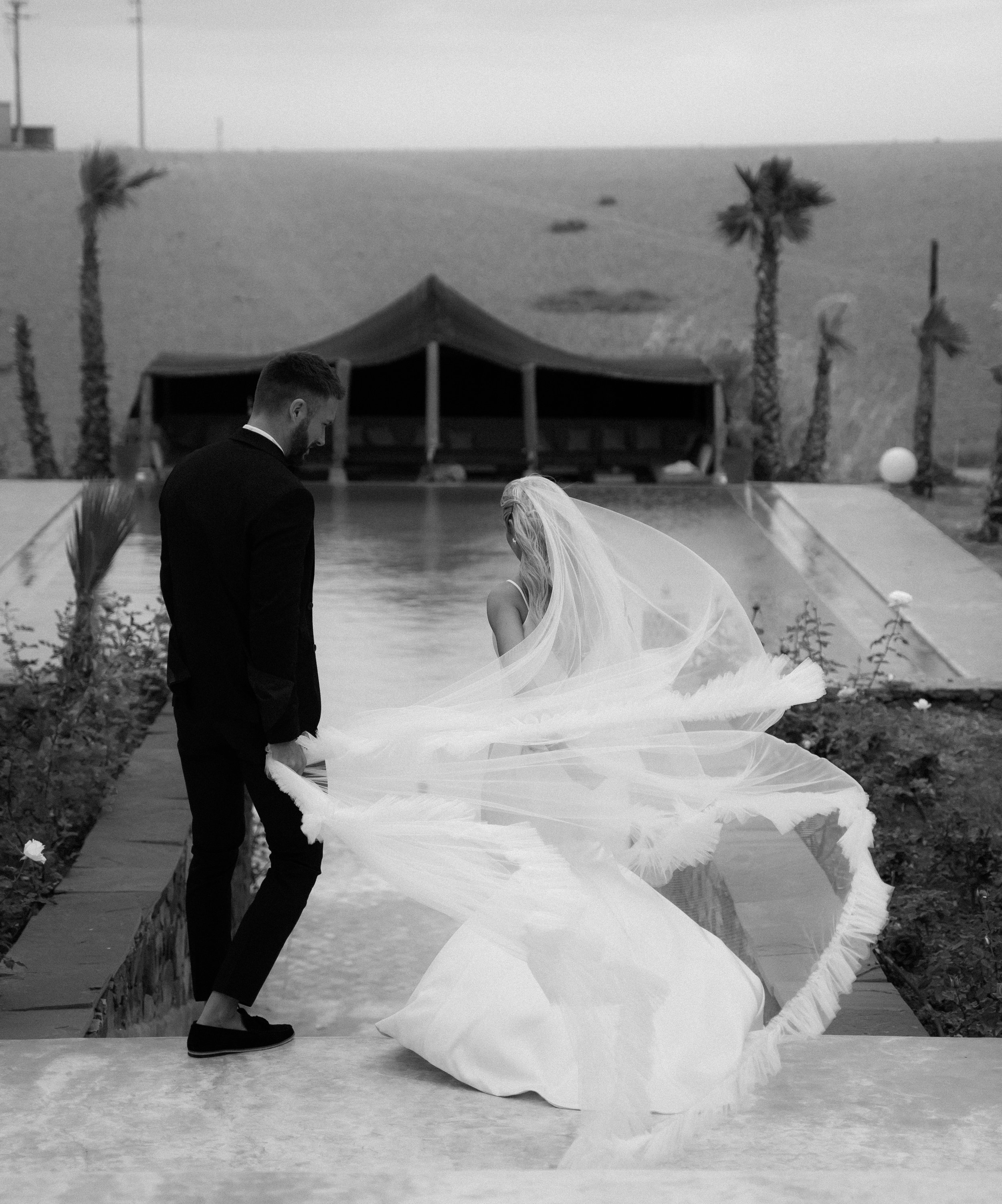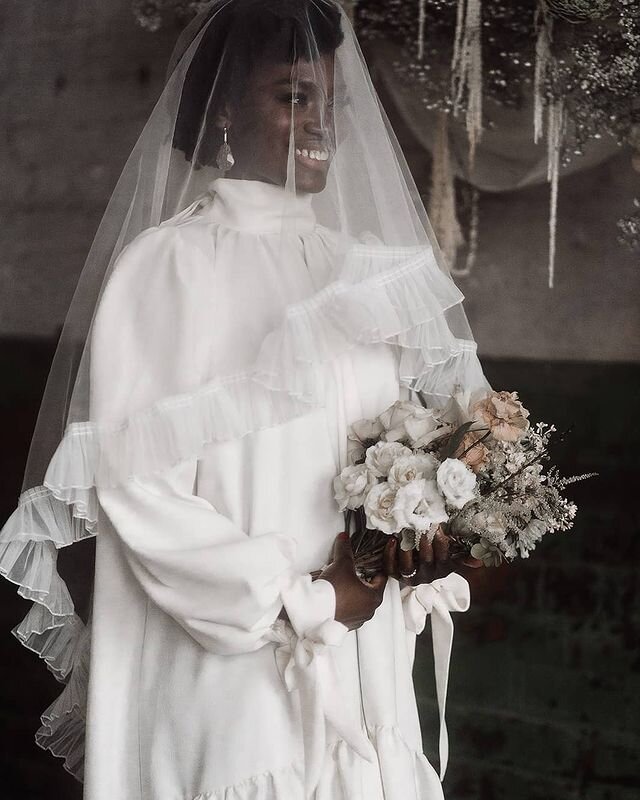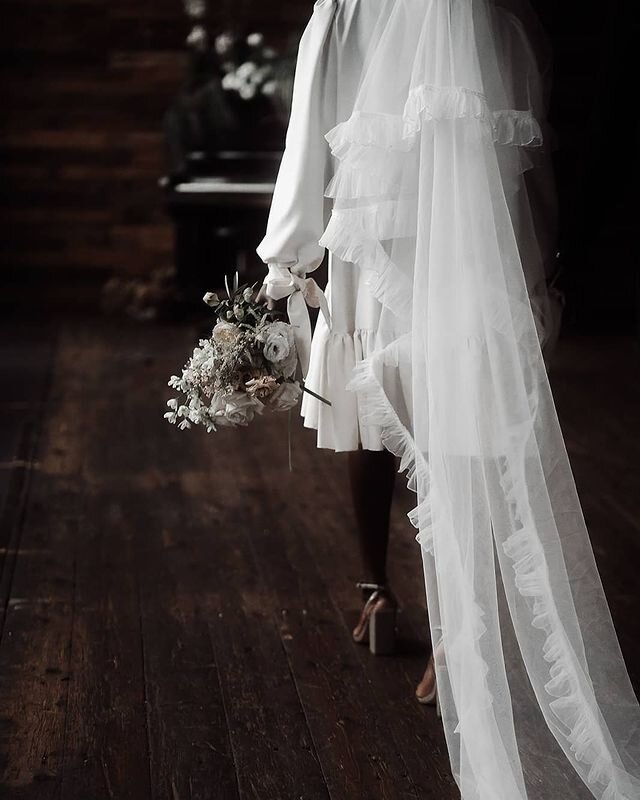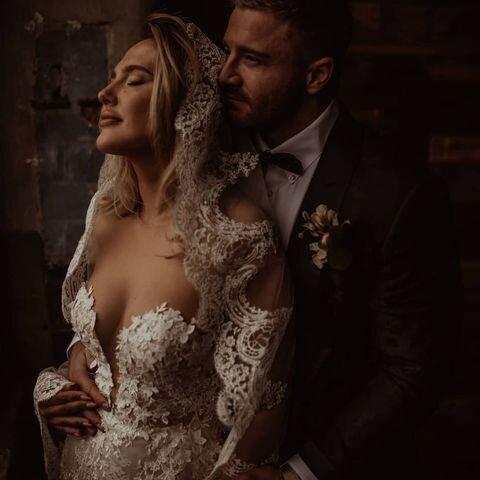A COMPLETE GUIDE TO VEILS
From veil lengths to veil edging
Heather from Sash & Veil really is an expert when it comes to wedding veils and as you are about to find out there is far more to it than you think! Choosing whether to go with a veil or a more modern veil alternative is an important wedding planning decision and here is all you need to know in order to make that choice.
Image by Marta D Weddings
What are the different types of veil?
Column veil – As the name suggests, this veil is probably the most simple to wear and works with most styles of dress and looks amazing with a jumpsuit or trousers. A column veil is created from a single tier which is designed to be worn to the back framing your outfit.
Waterfall veil – A waterfall is created when the sides of the veil are cut into a cascade, falling from around waist level to the end of the veil. A waterfall veil works well with strapless and sleeveless gowns as the sides can be worn to the front giving coverage to the shoulders and arms.
Juliet cap veil – A Juliet cap veil is created from a shaped section forming a cap attached to a single tier veil. Named after Shakespeare’s Juliet, the Juliet cap veil is more often associated with 1920s bridal fashion and had a recent revival when Kate Moss chose to wear a Juliet cap veil for her wedding.
A two-tier veil is formed of a shorter or “blusher” tier and a longer tier. The shorter tier can be worn to the back of the head but can be pulled forward across the face ready to be lifted if you are going for a traditional lifting of the veil moment. It usually has a little gather at the comb which is where it differs from a drop veil.
A drop veil simply drops over your head with little or no gather. The shorter blusher section is worn across your face and is secured in place with either a comb, a headpiece or veiling pins. The blusher section is then lifted back after the ceremony. This style of veil is another traditional style and is often associated with royal weddings.
By way of contrast a draped veil offers a unique alternative to the more traditional options above. A draped veil is secured with two combs or clips placed on either side of the head forming a drape at the back. This back drape can be as shallow or as deep as you choose - a deep drape will leave your back exposed allowing any back detail of your dress to be visible. A draped veil is also a great way to showcase your bridal hairstyle and works equally well with updos and loose hairstyles.
A Birdcage veil is a very short veil created from Russian net – a very stiff open weave net - and is worn across the face. There are two different types of birdcage veil – it is either gathered onto a comb and fits to the crown of the head or a bandeau birdcage veil which is held in place by combs or clips placed above each ear. A birdcage works well with retro dress styles and smaller, less formal weddings.
What are the Wedding veil length options?
There are no industry standard lengths, although most designers choose similar measurements as reference. I use the below length terminology as a guide but as each veil is cut to order, the length can be cut to your own choice of measurement.
Fingertip - Falls to around hip length and is a good choice if you want to wear your veil all day, keeping the bridal vibe going but without trailing swathes of tulle around behind you.
Ballet – Sometimes called “waltz” length, a ballet veil extends to between the back of the calves and ankle and again, can effortlessly be worn all day. A ballet length veil works well with ankle length dresses.
Floor – A floor length veil just grazes the floor and forms a small puddle train around you. A floor length veil works well with a dress which has no train or a very small train.
Chapel – Chapel is the most popular length of veil. It’s a long veil but is slightly more manageable than a cathedral length. If your dress has a small train you may choose to add length with a chapel veil
Cathedral – Cathedral length is a wonderful choice for a church wedding adding bridal drama with a long sweeping silhouette. If your dress has a long train, I’d recommend choosing a veil which extends at least 25-30 cm beyond the end of your dress. This section is called the “veil window’ and is also a good way to showcase any embellishment at the end of your veil.
Royal - The ultimate in bridal drama, a royal length veil makes for the most dramatic entrance and why not go royal because when else can you? A royal length veil refers to lengths of 300 cm and beyond.
Image by Courtney Marie
Veil fabric options
Your veil can be made from virtually any lightweight sheer fabric including Chantilly lace, chiffon and organza but these are the usually choices:
Illusion - A super sheer veiling net, usually made from nylon with a little structure so it will stand away from the body and creates a little volume when gathered onto the comb.
Silk tulle - The most expensive option, pure silk tulle is the ultimate in wedding veil luxury. Silk tulle is available in different handles – super soft and draping or with a little more structure. I do love silk tulle but bear in mind it does crease easily and it has a tendency to snag.
Synthetic silk tulle - Also available in different qualities, synthetic silk tulle is beautifully soft and draping. It falls straight down, has no body or stiffness and will drape around your body as you move. It’s sometimes referred to as English net or Italian tulle. It is also pretty robust and my synthetic silk veils can be gently washed in a machine!
Image by Emma Ryan
Image by Emma Ryan
Wedding veil colour options
The most commonly chosen veil colours are pure white, silk white, ivory and champagne. Very few veils are pure white and even if you think your dress is white, it probably is one of the many (and there are many!) shades of ivory. If in doubt, do ask your dress designer or boutique before you order your veil.
If your dress consists of several colours, such as latte or tintanium overlaid with a lighter shade such as an ivory lace, I always advise to match your veil to the lightest shade of your dress – so match the veil to the lace or the overlay which will have the effect of lightening the whole look.
If your dress is a more unusual colour, both synthetic and silk tulles are available in many colours or you may choose to have your veil custom tinted. Most synthetic tulles can be dyed including the option to ombre.
Blush is always a popular choice of veil colour. An ivory dress teamed with a blush veil adds a unique dimension to the overall look and can be tied in to work with your bridesmaids and wedding florals.
Image by Amber Blue
What are the veil edging options?
There is something wonderfully luxurious about a simple raw edge veil, with the tulle cut into a simple clean line with no edging. However, you can completely transform a veil by adding an edging and here are just a few examples:
A lace trim adds a traditional edge and can be stitched all the way around or a half-edged veil is where the lace begins from around the waistline.
Horsehair trim – this is a structured edging which can be applied to the edge of a veil. It is a ribbon-like trim which use to be made from horsehair, but is now made from nylon and it gives the veil a voluminous wavy edge.
Rolled hem - the edge of the veil has a very narrow stitched hem giving a little definition to the outline of the veil.
Simple stitched edge –the edge of the veil is finished with a very fine satin stitch. It is a little more delicate than a rolled hem giving a very subtle frame to the shape of the veil.
Image by Esme Whiteside
Your wedding veil can be embellished in a number of ways to tie in with your dress or if your dress is plain your veil can be your blank canvas and you go a little crazy!
Embroidery - Veil embroidery is a huge trend right now and is a very special way of personalising your veil with wording and outlines. A veil can be embroidered using computerised embroidery, free motion embroidery or hand-embroidery. Computerised, or digital embroidery is created from a digital file and tends to be more precise and uniform. Free motion embroidery is a method of drawing with your sewing machine. The possibilities are endless with embroidery and if it can be sketched, it can be translated into thread to embroider onto your veil.
3-D flowers. Another big trend is adding flowers to embellish your veil. These can be created from silk or lace or real flowers. The flower shapes can be chosen to tie in with your dress detail or to work with your bouquet and choice of wedding flowers. Flower veils work really well for relaxed boho weddings.
Pearls can be used to embellish your veil and a pearl veil is either created from a pre-decorated fabric or your veil designer can apply the pearls to the veil individually for a more random effect. I use floating pearls, which are sandwiched between the fabric so however your veil falls there will be no “wrong” side to the veil.
Crystals can be added to enhance your veil and catch the light. Veiling crystals are made especially to embellish veils and are completely transparent to allow the light to shine through the tulle.
I always suggest trying a veil, even if you’re really sure you don’t want one – I often hear from brides who’ve been adamant they’re not going to wear a veil and then they try one and they can’t imagine not having one! However, if you’ve tried a veil and it’s really not for you, there are alternatives:
Tulle wings or bridal wings: Bridal wings are created from two single tier lengths of tulle which attach to each shoulder of the dress at the back. They work best of they are at least 50 cm longer than the end of your dress and add a wonderful whimsical feel to your look.
A Cape veil – is a great choice if you want the length and drama of a veil but don’t to wear anything in your hair. A cape veil is usually attached at each shoulder with a drape at the back to form a long sweeping train.
Image by Courtney Marie
As you can see there is so much more to a veil than you think and so many modern ways to incorporate it into your wedding styling, if you need any further veil advice I would recommend contacting Sash & Veil, whose attention to detail and quality veils are second to none.
If you need any advice on any other aspect of wedding planning, please do not hesitate to contact me - I can literally talk weddings all day long!

